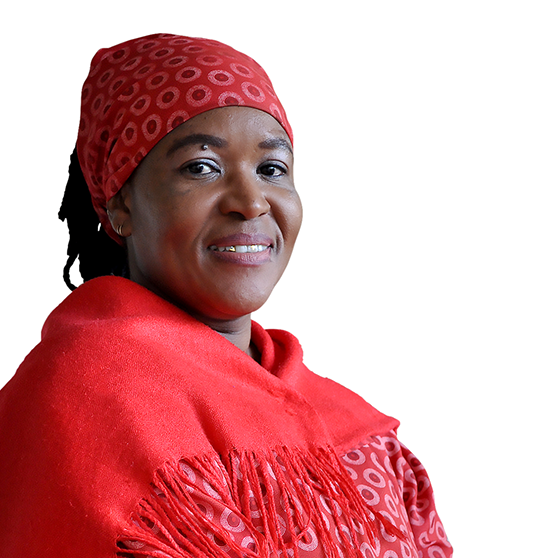


Mourning for a loved one
In our continuing series of articles, Eish! takes a look at different cultural practices and how they all contribute to the beautiful, rich tapestry of South African life. In this edition we look at the practices surrounding mourning in the Basotho culture.
The death of a loved one is a devastating event that not only leaves us with a great sense of loss, but also the yearning to pay our respects in the appropriate manner. In the Basotho culture showing respect for a beloved husband means a mourning period of between three and 12 months for the widow.
Evelyn Sebidi, former receptionist at the Institutional Office and now newly appointed senior administrative assistant at the Faculty of Pharmacy on the Potchefstroom campus, shares with us the cultural practices she followed after the death of her husband, Dan.
Staff and visitors know Evelyn Sebidi as the friendly receptionist at the Institutional Office and, most recently, as an administrative assistant at the Faculty of Pharmacy on the Potchefstroom Campus. She wore this dress for six months as part of a mourning period after the death of her husband, Dan. “I will miss him a lot, he will always be a part of me.”
CLICK TO SCROLL DOWN


Six months of grieving
Dan Sebidi sadly passed away on 14 October 2015 after a long illness. “The funeral was held on 25 October and on the following day I started wearing my mourning clothes as was prescribed by my husband’s family.”
Evelyn says there are very strict rules in her culture that need to be followed correctly to honour the memory of deceased loved ones.
She was presented with a choice of three, six or 12 months for mourning. “I felt that a six-month period would be better than just three months. Twelve months would be too long because I also have to work, and mourning in the Basotho culture means donning attire that has to be worn every day for the mourning period.”
Red or black dress shows respect
The usual colour for mourning clothes is black, but because Evelyn works in a professional environment and with the public on a daily basis, her family allowed her to wear a dignified red dress.
“Wearing the dress symbolises that I have obeyed the laws of my culture and my in-law’s rules. It is a sign that I am committed to my marriage and respect my husband.”
Evelyn devotedly wore the dress for the whole duration of the mourning period. When the six months ended in May this year, she and her family ceremonially burned the dress as part of a cleansing ritual that was conducted by her brother, David Dikupe.
“The burning of the dress ushered in the beginning of a new life even though you are still honouring your husband’s memory and will stay part of his family,” she says.
Strict rules govern mourning period
Evelyn says apart from wearing the dress as a symbol of her dedication to Dan, she also had to follow other strict rules during the mourning period.
This included her and her children not leaving their house after 17:30 and burning all the lights in the house every night for the whole six months. “The lights are turned on for our ancestors, so when they visited the house they found it clearly lit.”
She says she followed the rules strictly because her culture is very important to her. “It is the manifestation of the ultimate respect for who one is and where you came from.”
Eish! invites staff to tell us about their cultural customs and practices. Send your contributions to our Eish! journalist, Willie du Plessis, at willie.duplessis@nwu.ac.za.
CLICK TO GO BACK